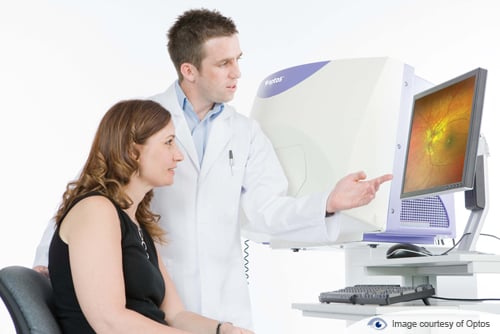Have you recently added optomap technology to your practice? Perhaps you have new patients that are not familiar with ultra-widefield retinal imaging, and they’re eager to learn more about how the technology can benefit them. Regardless of the situation, when you present optomap to your patients for the first time, they may have several questions. To help you answer those questions, as well as explain the benefits of optomap, below are some of the most common questions and answers practitioners receive about optomap you can use as talking points.
- Do I really need a retinal exam?
The retina’s sensitive tissues often show early stages of diseases, such as diabetes, stroke and some cancers before you experience other symptoms. An optomap should be considered part of a comprehensive eye exam. It also allows us to view more of your retina than we could with other technology. - What is an optomap? Are there any side effects of this exam?
An optomap uses scanning laser technology to create a panoramic, digital, high-resolution, and 200 degree view of the retina. The lasers are low intensity and non-invasive – in over 40 million images, no side effects have been found. - How does optomap benefit me as a patient?
There are many patient benefits associated with an optomap exam. For example, optomap images can be saved for comparison purposes. This image becomes a part of your permanent medical record and enables us to see more of your retina, measure aspects of your eye, and magnify some of the finer details. We can also track changes in your eye over time by comparing each year’s optomap. In addition, because the optomap images 82% of your retina, many diseases that generally present further out on the edges of the retina can now be spotted earlier. The early detection of any retinal abnormality is crucial to maintaining your ocular and systemic health because in most cases of eye disease, in the early stages, you will experience no signs or symptoms. - Is an optomap exam painful, and is it safe for children?
The optomap is completely painless and only takes a second to complete. You will not need to have your eyes dilated for the exam, so you can even drive afterwards. Not only is optomap safe for children, it’s highly recommended since many vision problems begin at early ages. - How often do I need to have an optomap done?
Generally speaking, an optomap should be included annually as part of your comprehensive eye exam.

If you have additional questions about how you can explain optomap to your patients, or if you wish to make it a part of your thriving practice, please visit our website, or contact us to request a consultation.